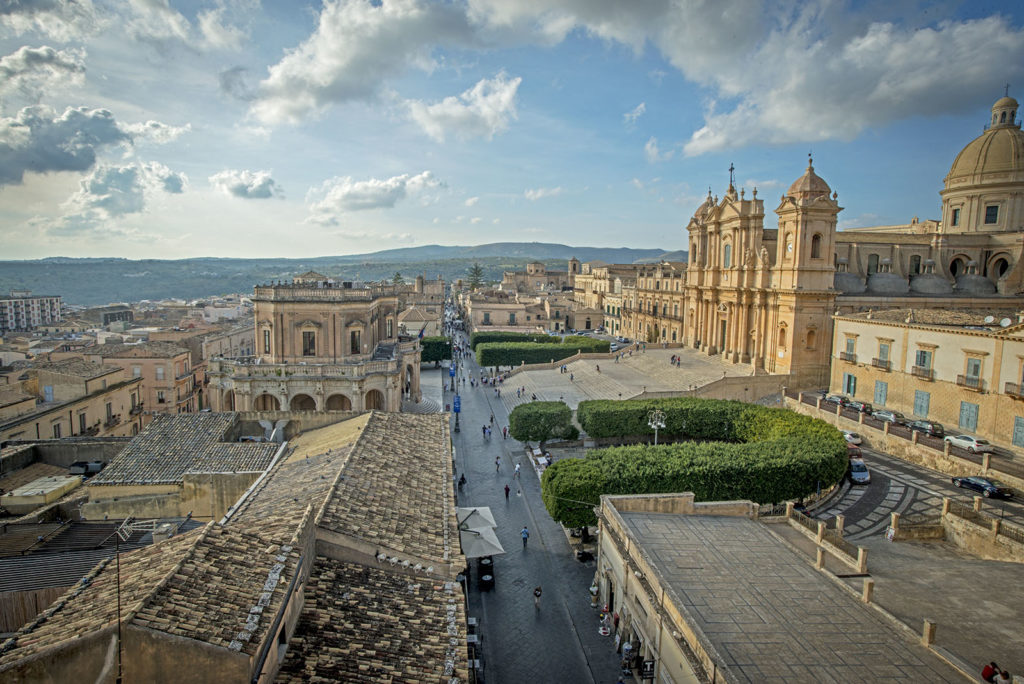The harmonious architecture and homogeneity of Noto stone create such a scenic balance that the city looks as though it were built in one night.
Noto was actually built over half a century by various architects and craftspeople.  The work of the architect
Angelo Italia
The work of the architect
Angelo Italia
was fundamental: he organised the city space and created splendid scenographic effects, transforming squares and streets into stages.
No less important was
Rosario Gagliardi
.
His constant presence in Noto allowed him to closely monitor all of his construction sites and to teach and prepare new, young architects. Upon his death, his works were completed by one of his students,
Vincenzo Sinatra
, who never forgot the expert’s teachings.
None of this could have been achieved without good basic organisation.
Thanks to Baron Giuseppe Asmundo, the land for constructing the new buildings was allocated fairly and the height of the buildings was also clearly defined. In this way, the buildings were all the same, creating a harmonious and homogeneous landscape.
The choice of
white limestone
, was also important.This local stone, when lit up by the sun, takes on a golden yellow colour reminiscent of honey.Its appearance has remained unchanged over the centuries; minimal interventions were made and you can still admire it in all its beauty and grace today.The effect is a landscape wrapped in an ethereal light.